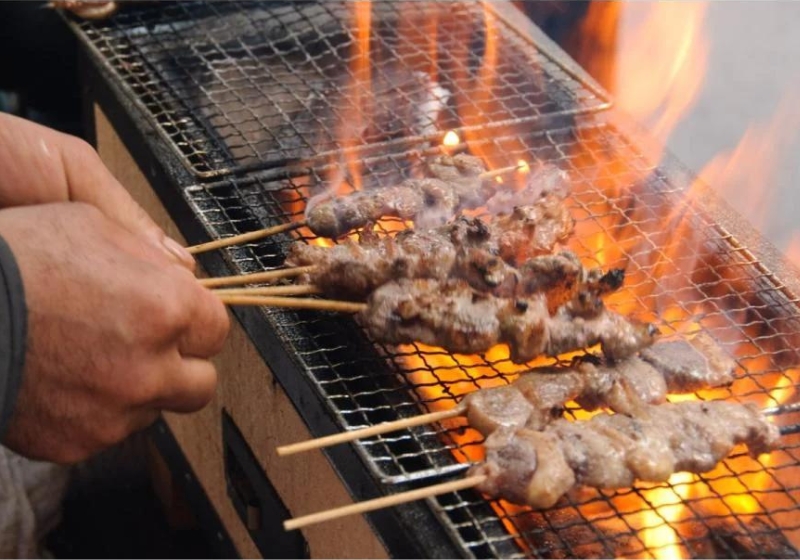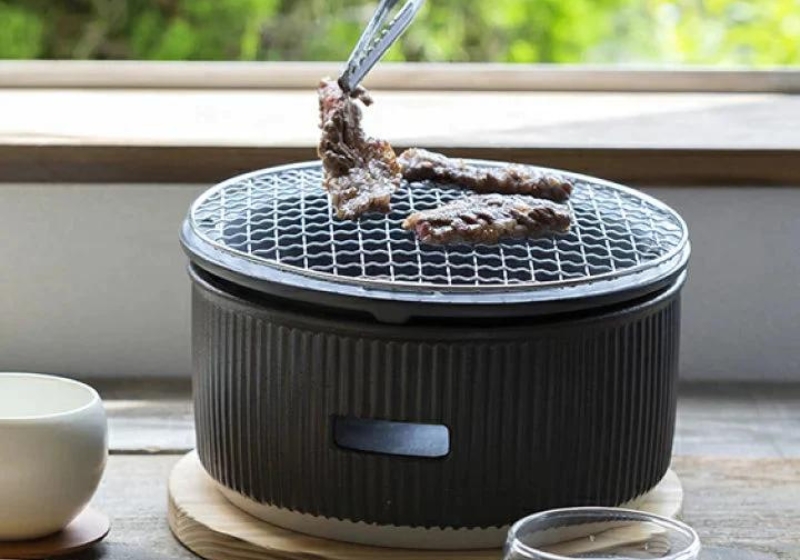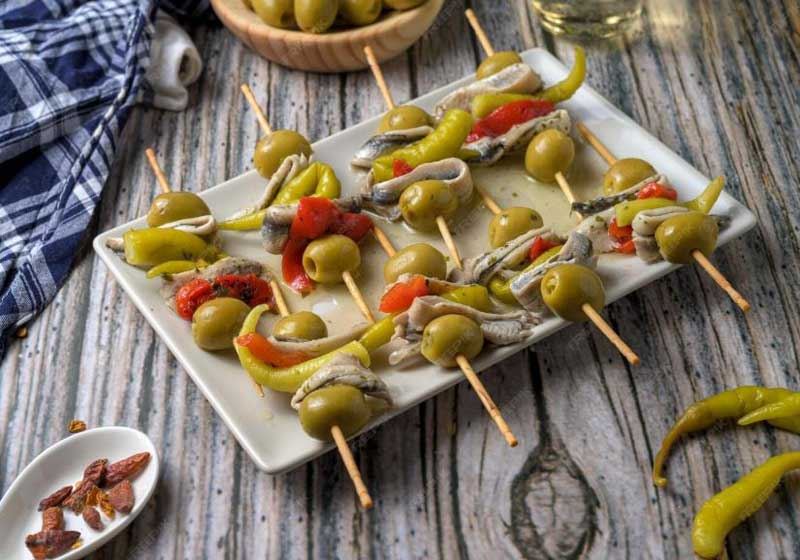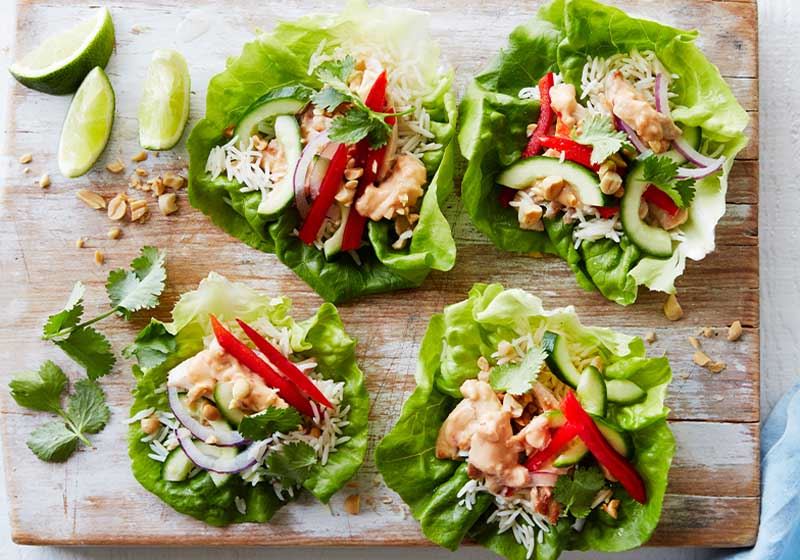By Laura Rancie.
Originating in Japan, hibachi has become popular worldwide for its unique cooking methods and delicious results.
One of the key elements of hibachi cooking is the use of a mesh grill placed over an open-topped cylindrical container, designed to hold burning charcoal. This grill allows for even cooking and imparts a distinct smoky flavour to the food.
Hibachi vs Teppanyaki:
While both involve grilling food over a flame, these forms of cooking are used to prepare different dishes and both have different origins. Hibachi grills use an open flame with a mesh grill, whereas teppanyaki uses a flat solid iron griddle. Where 'teppan' refers to an iron plate and 'yaki' means grilled, hibachi refers to a fire bowl. Hibachi’s source of heat comes from burning wood or coal and the focus of teppanyaki is on theatrics and knife skills.

The theatrics and entertainment value of a teppanyaki restaurant, note the flat grill the food is cooked on.
Hibachi at Home:
To master hibachi cooking at home, you'll need a few essential tools: a hibachi grill, a sharp knife and a set of cooking utensils. One of the key techniques in hibachi cooking is the use of high heat. This helps to create the characteristic sear on meat and vegetables, locking in flavour and moisture. When talking to staff at Minimaru, Japanese home wares store they commented that Hibachi's are the ultimate in home BBQ gatherings! At the last staff party, Minimaru set up several hibachis and fired up a cozy BBQ pared with a delicious assortment of steak, grilled vegetables, and seafood.
History:
Dating back to roughly 794 to 1185 AD, hibachi-style cooking is linked to the Heian period of Japanese history, where metal was not a resource commonly found and so the earliest hibachis were crafted from an amalgam of cypress wood lined with clay. Intended initially as heating devices, it wasn’t until samurais and wealthy dynasties used them extensively that they became popular, leaking down to the lower class over time.
As a result, their functions diversified and in addition to being a heat source, they were used as portable stovetops. The exact transition of hibachis being used solely as a cooking tool is argued within culinary circles and even scholars. What we do know is that the very first restaurant in Japan, Misono, to implement hibachi cooking opened in 1945 – as a means to cook food for paying customers and entertain at the same time.

A traditional hibachi features a mesh grill with open flames.
Presentation is also key in hibachi cooking. Dishes are often served on hot plates adding to the theatrical aspect of the meal. Garnishes such as chopped scallions, sesame seeds and pickled ginger are commonly used to add colour and flavour to the dish.
Where to Buy a Hibachi Grill Locally:
Expertly crafted to deliver unparalleled heat retention and distribution, a hibachi grill should ensure a perfect sear every time. Minimaru has an extensive gallery of grills and accessories for you to browse and try.

A traditional family set intended for 4-8 people may set you back $455, like this Okunoto Japanese Hibachi Grill, pictured above. Also available for 2-4 people, or a larger set for dinner parties and special occasions for up to 12 people, this hibachi is made from natural diatom mud, from the Noto Peninsula of Ishikawa prefecture of Japan, maintaining an extremely high temperature of up to 1200 C for an authentic Japanese BBQ flavour.

You could alternatively try the Saliu Charcoal Grill at only $169. The heat-resistant ceramic is highly durable and stain-resistant but is great for slow cooking with authentic grilling sounds and aromas. The grill net is made from solid stainless steel wire and is an authentic Japanese product.
Mastering hibachi cooking is a rewarding experience that requires practice, patience and a love of good food. With the right tools, ingredients and techniques, you can create delicious hibachi dishes similar to those served in restaurants. Fire up your grill and get cooking – the world of hibachi cuisine awaits.








